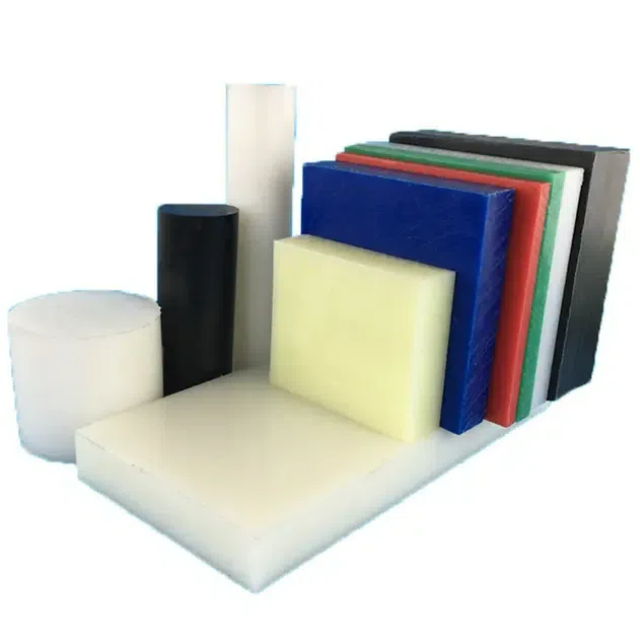High-Density Polyethylene (HDPE) sheets are among the most versatile and widely used engineering plastics in the industry today. Renowned for their strength, durability, and resistance to chemicals and abrasion, HDPE sheets are essential in a variety of applications ranging from construction to food processing. At Tianjin Beyond Technology Developing Co., Ltd, we specialize in the production and sale of top-quality HDPE sheets, offering products that meet the highest standards for performance and reliability. Understanding the weight of these sheets is crucial for businesses involved in logistics, handling, and large-scale industrial projects. This article will guide you through the key aspects of HDPE sheets' weight, their impact on handling and transportation, and how to calculate it for your specific needs.
1. Weight Range for HDPE Sheets
One of the primary factors to consider when working with HDPE sheets is their weight. The weight of an HDPE sheet varies depending on its thickness, size, and the specific grade of material used. For instance, a sheet that is 1/8 inch thick will weigh much less per square foot than one that is 1 inch thick. It is essential to understand this variability to make accurate estimates for shipping, storage, and handling.
Typical Weights per Square Foot or Square Meter:
A 1/8 inch thick HDPE sheet typically weighs around 0.5 pounds per square foot (2.4 kg per square meter).
A 1/4 inch thick sheet weighs approximately 1 pound per square foot (4.8 kg per square meter).
A 1/2 inch thick sheet weighs about 2 pounds per square foot (9.6 kg per square meter).
A 1-inch thick sheet can weigh up to 4 pounds per square foot (19.2 kg per square meter).
This range provides a general guideline, but the weight can vary slightly depending on the material composition and any added features, such as anti-static properties or UV resistance.
2. Impact of Weight on Handling and Transportation
The weight of HDPE sheets plays a significant role in how they are handled, stored, and transported. For businesses involved in bulk purchases, especially those working on large-scale projects, understanding the weight of each sheet is crucial for planning logistics effectively.
How Weight Affects Storage and Transportation Costs:
Storage Space: The weight and size of HDPE sheets directly impact the amount of space required for storage. Heavier sheets may need to be stored in larger, more reinforced shelving units or specialized storage facilities.
Shipping Costs: Since HDPE sheets are usually sold in large quantities, the weight can influence shipping fees. Heavier sheets incur higher transportation costs, particularly for international shipping or shipments requiring special handling.
Handling Considerations: The weight of HDPE sheets can also affect how they are handled on-site or in warehouses. Heavier sheets may require special lifting equipment or multiple workers to move and position them safely.
For large-scale applications, it’s essential to factor in these weight-related considerations when planning a project, as they can significantly impact overall costs.
3. Comparison with Other Materials
When comparing HDPE sheets with other materials, such as Low-Density Polyethylene (LDPE) or Polyvinyl Chloride (PVC), weight is a distinguishing factor that often plays a crucial role in material selection.
HDPE vs. LDPE:
Weight: HDPE is denser and stronger than LDPE, which makes it more suitable for heavy-duty applications but also means it is heavier. LDPE, being more flexible, is often used in lighter applications like packaging but lacks the strength and durability of HDPE.
Performance: HDPE is preferred for projects requiring high impact resistance and durability, while LDPE is typically used in situations where flexibility is more important than strength.
HDPE vs. PVC:
Weight: PVC tends to be heavier than HDPE, making it less convenient for certain applications where weight is a critical consideration. HDPE's lighter weight gives it an advantage in terms of handling and transportation.
Resistance and Durability: Both materials offer good chemical resistance, but HDPE generally performs better in harsh environmental conditions, making it more reliable in long-term applications.
One of the primary benefits of HDPE is that, despite its high strength, it is still relatively lightweight compared to materials like PVC, making it easier and more cost-effective to handle and transport.
4. Weight Considerations for Specific Industries
The weight of HDPE sheets is an important consideration for different industries, where the requirements for strength, flexibility, and durability vary.
Heavy-duty Applications (e.g., Tank Liners):
For industries such as chemical processing, agriculture, or mining, HDPE sheets are often used in heavy-duty applications like tank liners or protective barriers. The weight of the HDPE sheets in these applications is essential, as thicker and heavier sheets provide greater durability and resistance to environmental stressors. These industries must consider the weight in terms of the logistical aspects of transporting large quantities of material.
Light-duty Applications (e.g., Food Processing):
On the other hand, industries such as food processing or packaging benefit from the lighter weight of HDPE sheets. Their non-toxic properties and FDA-approved status make them ideal for handling food products, but the lighter weight allows for easier installation and movement in food processing plants, where heavy-duty materials may not be necessary.

Conclusion
Understanding the weight of HDPE sheets is essential for businesses involved in large-scale projects, logistics, and industries that rely on these versatile materials. From construction to food processing, the ability to estimate and manage the weight of HDPE sheets can significantly impact cost-efficiency, handling, and transportation strategies. At Tianjin Beyond Technology Developing Co., Ltd, we provide high-quality HDPE sheets that meet the diverse needs of our clients across various industries. Whether you are working on a heavy-duty application or require lightweight sheets for food processing, we are here to support your project with the best products and expertise.
Contact Us
If you have any questions or would like to learn more about our HDPE sheets and other products, please don’t hesitate to contact us. Our team at Tianjin Beyond Technology Developing Co., Ltd is ready to assist you with all your needs.













